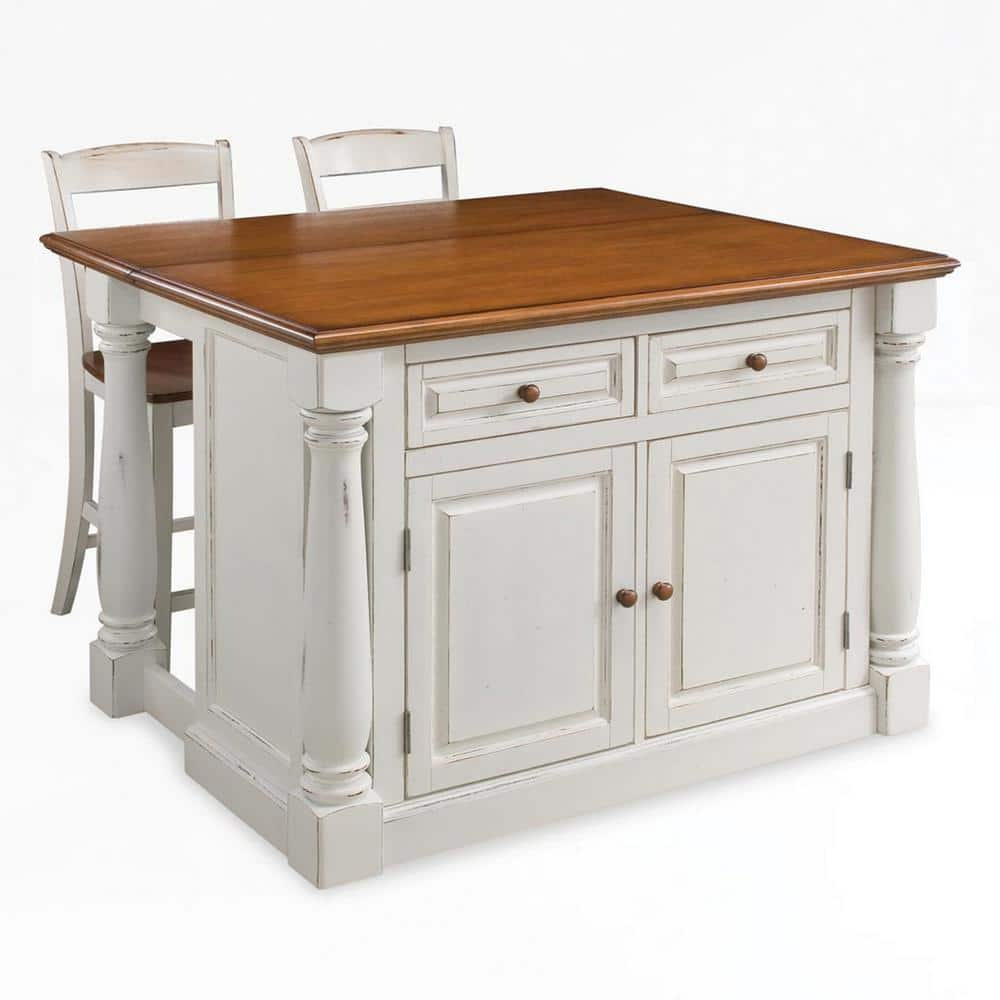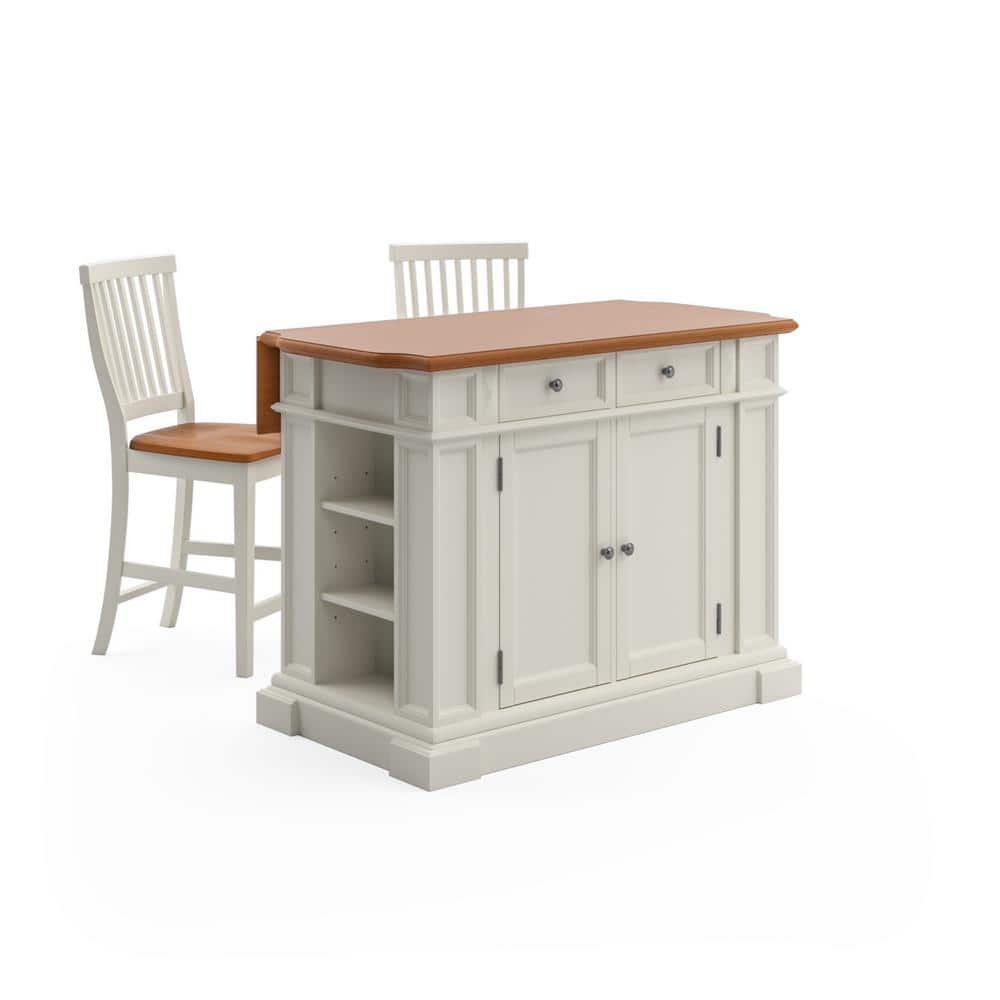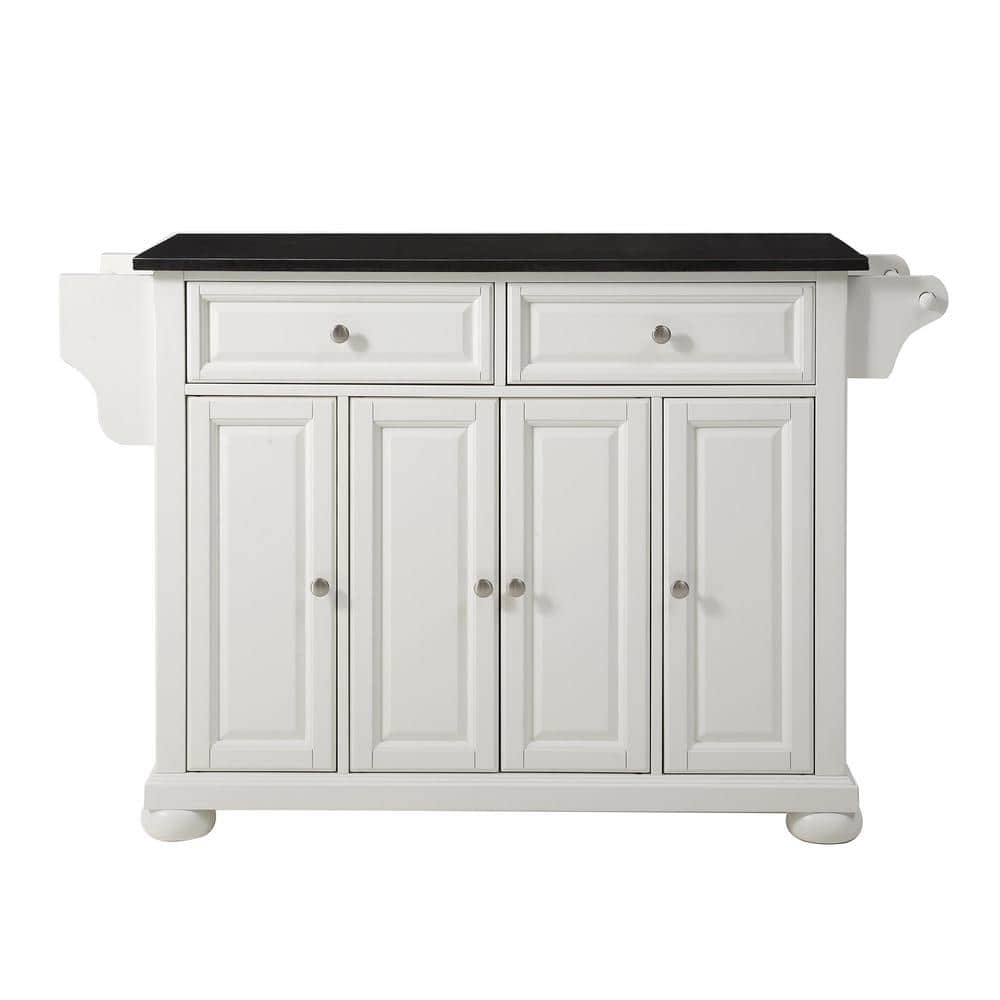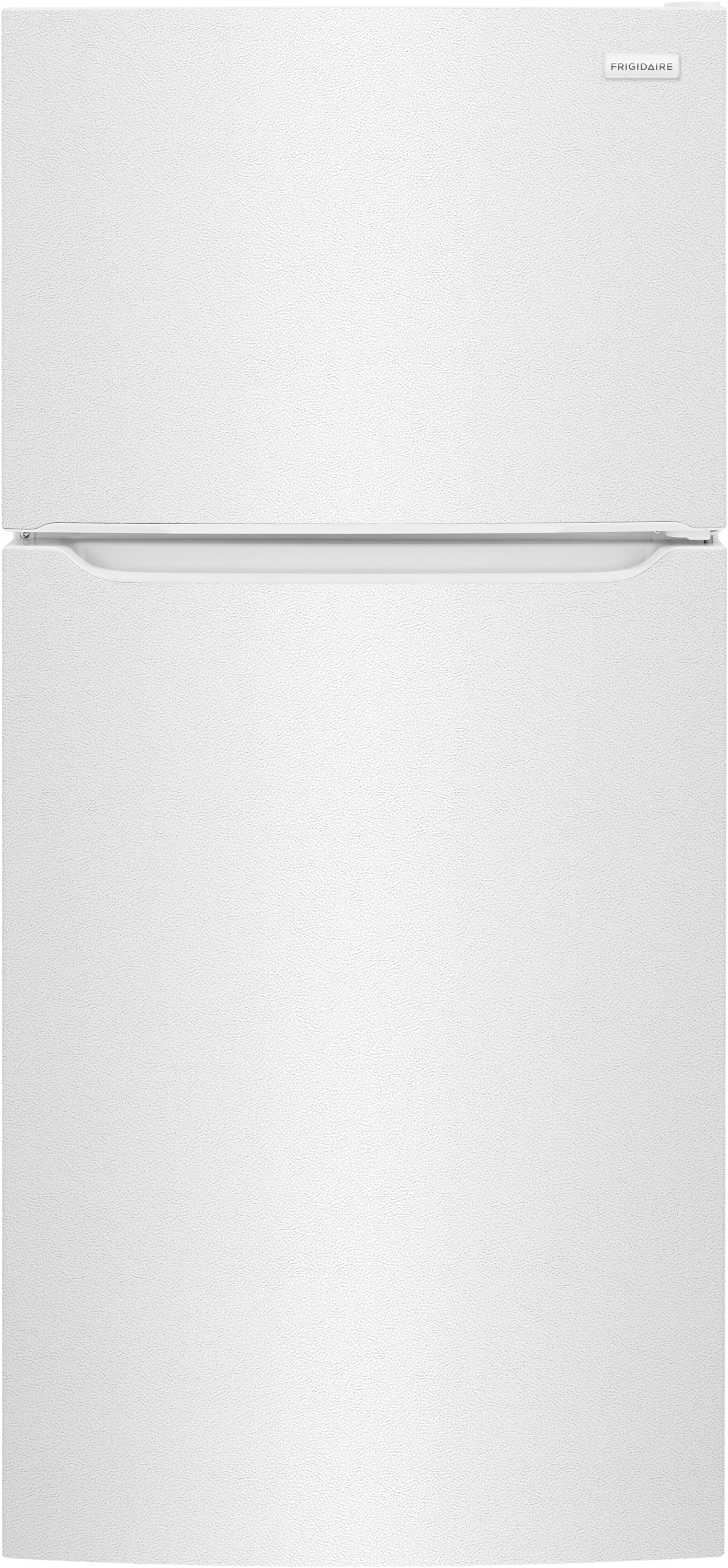HOMESTYLES Monarch White Kitchen Island With Seating
Constructed of hardwood solids. Easy assembly. Ships small parcel.
Enhance your kitchen space with this Homestyles Monarch kitchen island. The distressed finish adds decorative charm. A solid hardwood top, drawers and shelves provides storage, and the drop leaf offers more surface area for food prep. For extra seating, it includes two counter-height stools.
- Drop leaf extends when more surface is needed and folds down to save space
- Set includes island and two stools
- Antique white finish provides time-worn character that never goes out of style
- Distressed finish creates an aged, well-worn and unique vintage look
- Hardwood is incredibly strong, easy to clean and maintains its beauty for ages
- Some assembly required using the easy-to-understand directions and common household tools
- Furniture conveniently delivers straight to your home
- U.S. patented
Additional information
| Dimensions | H 36 in, W 48 in, D 25 in |
|---|---|
| Depth | Standard (21-36 in.) |
| Width | Standard (40-55 in.) |
| Manufacturer Warranty | Limited Manufacturer |






by Chris
To paraphrase A Chorus Line, the initial construction is a pain. Insert connectors were a problem, but overall, once put together, a great addition to the kitchen.
by Louise
Very nice ! It was exactly like the photo showed. Very happy with it.
by Steve
this is the prefect fit to any large kitchen needing some more seating! this piece is built to last and look amazing every day! the top is so smooth, and prefect to prepare any food and sit right there and eat! no one will be sorry with this piece in their home.
by David
No…hard to adjust cabinet doors.
by Cherly
This kitchen island is absolutely beautiful and a great asset to my kitchen. Plenty of cabinet space, counter top and seating.
by Francisco
My only complaint is the panel’s behind the drawer should be made thicker,when you’re sitting on the stool it’s inevitable to bump it with your knees or foot